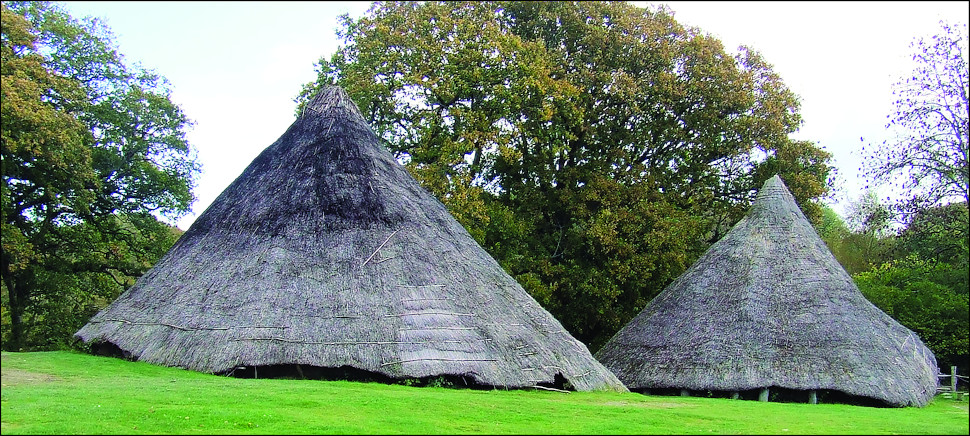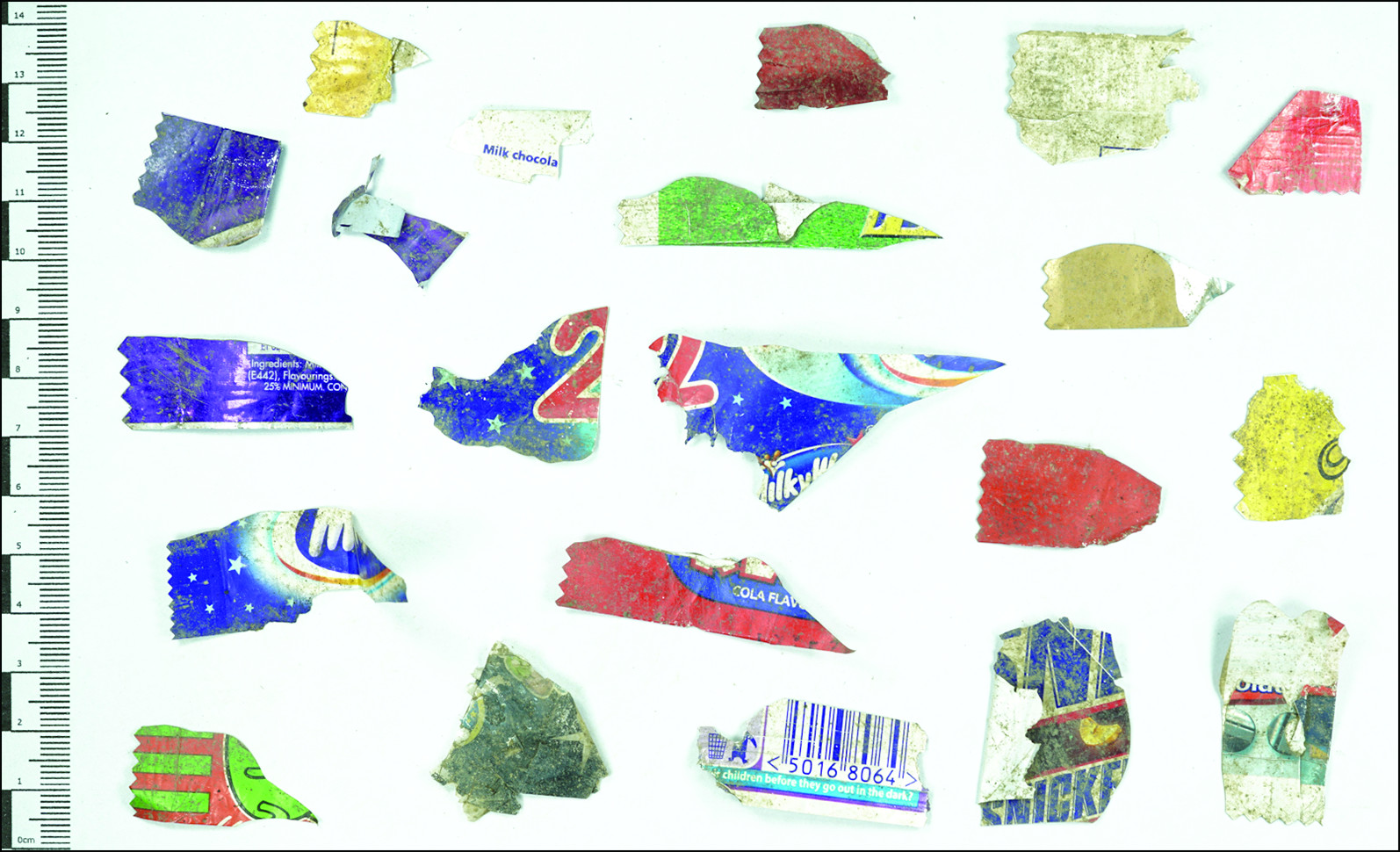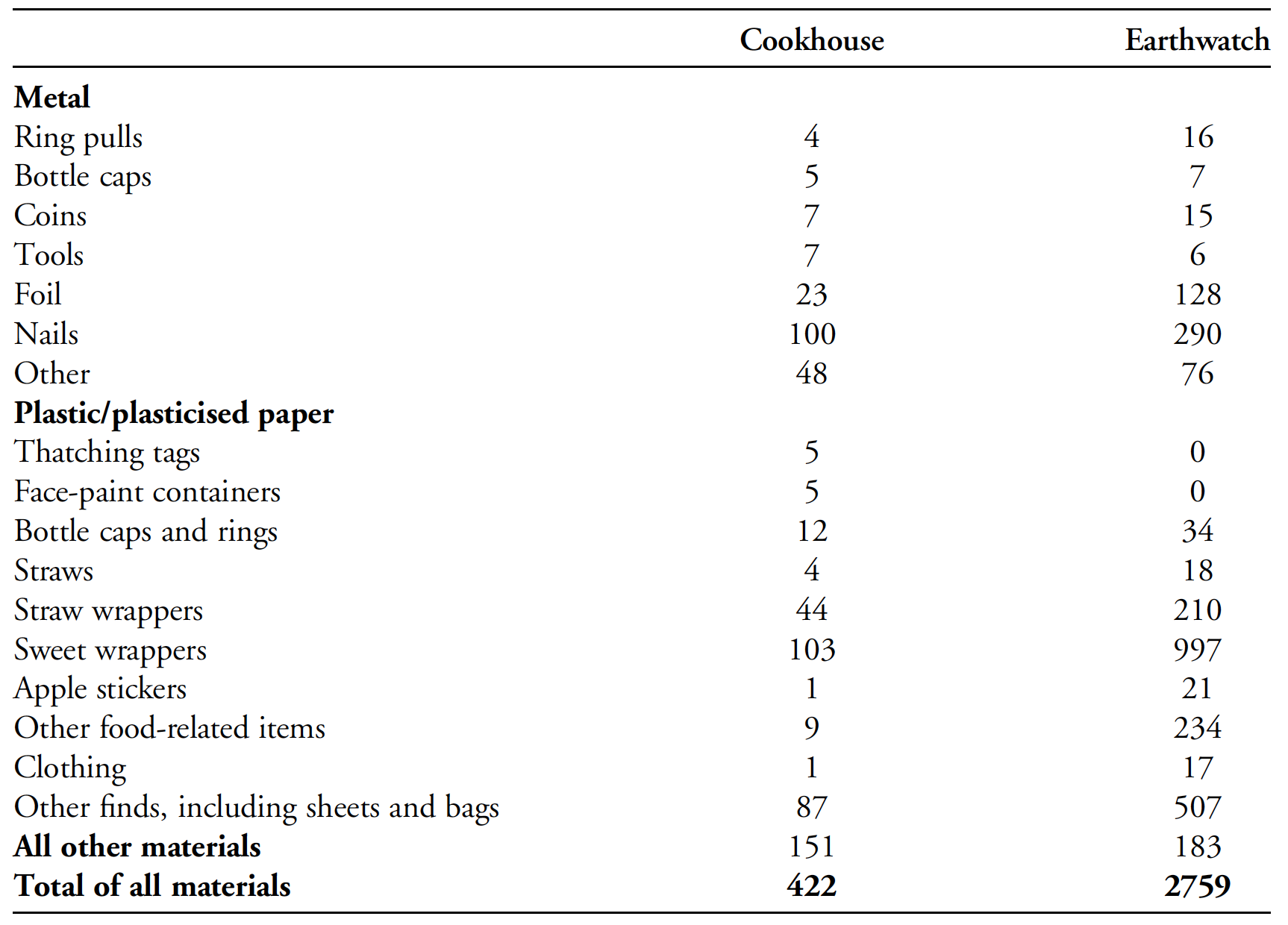One by one, the archaeologists stumbled upon pieces of junk. Using techniques typically reserved for documenting stone tools and bones, the team recorded such items as plastic spoons, eye glasses, bottle caps, straws, mobile phone batteries, paint can lids, candy wrappers, and plastic wrap. By the time the experiment was over, the archaeologists had uncovered nearly 3,000 items, the vast majority of them made of plastic.
That plastic would be found at the site, a former hillfort in Wales, was not a surprise. In fact, it was expected, but not to this degree.
Since the 1980s, two replica Iron Age roundhouses existed on this spot, matching the ones that once stood at the Castell Henllys Iron Age fort during the late first millennium BCE.

Most of the visitors who came to the site were children out on field trips, the legacy of which is only now being understood. As the new Antiquity paper shows, plastics have a habit of sticking around — including in heritage sites that existed long before these synthetic materials were invented. It’s yet another sign that we’ve entered into the Anthropocene, a period in which we’re remaking the planet in our image.
The replica roundhouses at Castell Henllys served two different purposes. The first one, named Cookhouse, was set up like an actual Iron Age roundhouse, while the second one, called Earthwatch, was configured like a classroom, where students sat on benches to learn and eat their snacks.

Pembrokeshire Coast National Park, which manages the site, recently decided to dismantle the roundhouses due to health and safety concerns. Prior to building new structures, however, archaeologists thought it wise to excavate the site. It would serve as a good opportunity to study decay processes, to determine which human activities result in leftover waste, and how replicated structures might affect the integrity of prehistoric structures located at the same site. Here, the two replica roundhouses were literally built on the same spot as the real ones that existed well over 2,000 years ago. As the authors wrote in their study, “we anticipated that the artefact assemblages and distributions at Castell Henllys could act as valuable tests for correlating accidental discard with activity patterns.”
This turned out to be the case, but the quantity of waste seen at the site exceeded their expectations.
“We often find a small amount of recent debris when beginning an excavation, or if we find a deliberate dump, but never like this within a heritage or occupation site building,” Harold Mytum, an archaeologist at the University of Liverpool and the first author of the new paper, explained in an email.

This is not to say the heritage site was managed poorly. The roundhouses were cleaned regularly to maintain the look and feel of a prehistoric Iron Age setting. But as the new research shows, a surprising amount of litter managed to creep its way into the soil, leading to the discovery of so many items. Needless to say, the vast majority of the recovered items were found in Earthwatch, where the students ate their snacks. Most of the items were small and fragmentary in nature, such as torn packages, which explains why not all of the garbage was collected.

“Children’s pack-ups [lunch packs] can damage the planet — they contain a lot of plastic and items get dropped and lost,” said Mytum. “Also, candy wrappers are plasticised and are another environmental threat.”

Needless to say, the discovery of all this plastic, while certainly a part of the experiment, forced the archaeologists to tweak their approach. The scientists had been recording all the finds, but they had to adjust their resources “to do the evidence justice,” said Mytum. That said, it did not affect the archaeologists’ ability to examine how the buildings had decayed over the decades and to the document the distinct signatures left by our modern civilisation.
“Indeed, it revealed how artefacts get incorporated into the flooring and also where they were densest inside the houses,” Mytum explained. “Prehistoric houses have fewer finds, but we can think about how activities leave their traces in the archaeology.”
Moving forward, Mytum and his colleagues will continue to work with Pembrokeshire Coast National Park to educate the public on these matters and to find more effective ways of keeping these important spaces clean.
But it won’t be easy.
“Even rural, well-managed locations can have a significant build-up of plastics in the soil,” said Mytum. “The Plastic Age — an indicator of the Anthropocene — has indeed come not only to the oceans of the Blue Planet, but also to its soils. Reducing use of plastics is essential — this debris was a by-product of our lifestyles even in a place where any obviously modern materials, such as plastic litter, is cleared away to avoid affecting the heritage visitor experience.”
To which he added: “If it is this bad here, it is a sign that our lifestyle needs rethinking.”
